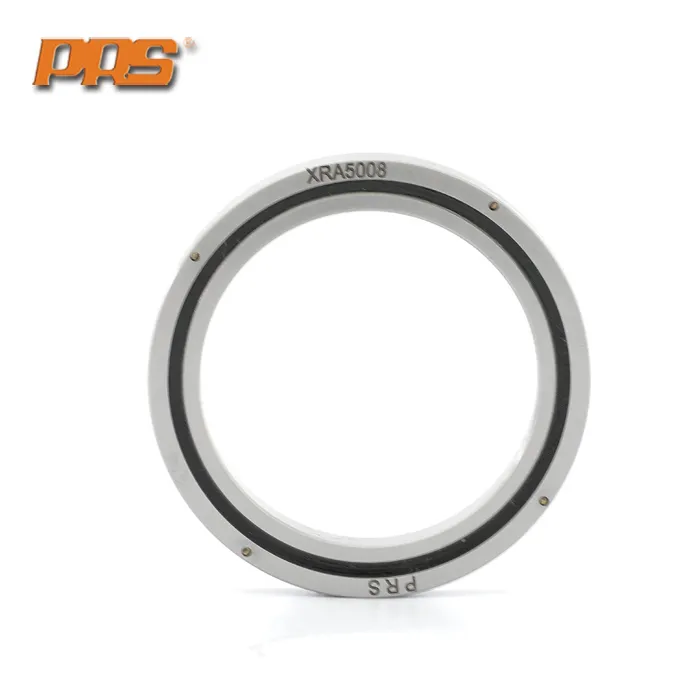Adjusting the preload of a rodamiento de rodillos cruzados is critical for achieving optimal performance, rigidez, y precisión. Es el proceso de aplicar una carga interna controlada durante el ensamblaje para eliminar el espacio libre interno y garantizar que los rodillos y las pistas de rodadura del rodamiento estén en contacto continuo.
Common Methods for Preload Adjustment

The specific method for adjusting preload depends on the bearing’s design and application. Here are the most common approaches:
Split Inner Ring or Outer Ring: Some crossed roller bearings are manufactured with a split inner or outer ring. During assembly, this split ring is compressed or expanded, often by a locknut or screws, to create the desired preload. This method is common for bearings used in high-precision applications like machine tool spindles and robotic joints.
Using Shims and Spacers: This method involves inserting precise shims, sleeves, or spacers between bearing rings or between the bearing and its housing. By carefully selecting the thickness of these components, the axial distance between the bearing races is controlled, thus setting the preload. This is a very accurate method, often used in individual bearing arrangements.
Adjustment Screws: For linear crossed roller guides and some rotary applications, preload is adjusted using a series of set screws along an adjustable rail. The screws are tightened in a specific sequence to apply even pressure and remove play. The technician checks for smooth movement by hand to confirm the correct preload has been achieved. Over-tightening can cause excessive friction and damage.
…
More detailed information on how to adjust the preload of crossed roller bearings can be found at:https://www.prsbearings.com/a/news/adjustment-of-preload-in-crossed-roller-bearings.html


